I’ve been hearing a lot about the term “Precision Scheduled Railroads” (PSR) in relation to the recent spat of derailments that we’ve been having, especially in East Palestine. I’m somewhat skeptical of any narrative that places all of the blame for one particular derailment, or even an increase in derailments, on one specific thing.
But it’s even more difficult than normal to come to any conclusion, because no one appears to be able to explain what the heck PSR even means. It doesn’t matter whether this be people trying to defend PSR or attacking it. Just getting a straight answer as to what exactly people are talking about has proven near impossible.
Let’s start with this pro-PSR piece from 2019.
UP:
Do you keep hearing about Precision Scheduled Railroading but wonder what that really means? The short answer is it’s a new service model many North American Class I railroads have adopted or are adopting in an effort to streamline operations. Precision Scheduled Railroading (PSR) looks a little different from railroad to railroad, but at its core it’s intended to benefit customers by providing consistent, reliable, predictable service. How are those goals achieved? Let’s take a closer look and chase down the answers to some of the most commonly asked questions.
In the past, the North American rail service model focused on moving long trains in order to maximize capacity and yield the greatest efficiency. While railroads would operate both unit trains (a train moving a single commodity) and manifest service (trains carrying a variety of commodities), unit trains were the preferred method to move a train, since faster train speed (also known as “velocity”) was the ultimate goal.
Where railroads previously focused on moving trains, PSR shifts that focus to moving cars. So, instead of waiting for a long train to be built, trains are always moving and cars are picked up on schedule, regardless of train length. Velocity and train length are still important to railroads, but now, the focus on moving cars takes precedence.

The piece makes the argument that railroads are becoming less focused on long train length, and more focused on delivering consistent train service. Rail corporations want the longest trains possible to minimize costs per unit shipped. But delivering shorter trains at more regular schedules could provide some harder to quantify benefits in terms of reliability and convenience for the customers.
This makes sense on the surface, except that people who are criticizing PSR, especially those with knowledge of the industry, claim that it has lead to longer and longer trains with fewer routes. Take the below piece, written by Matthew DeLay in April 25th of 2022, long before the East Palestine derailment.
Greetings, I hope this finds you all well. A fellow engineer passed along information from another engineer, who I have never met, Mike, 17 years an engineer, like me, with a degree, like me (art, English), which has led to writing this body. The issues before you are customer service shortages and labor shortages. I will address one issue on the topic of service shortages: Precision Scheduled Railroad (PSR) monster trains.
Monster trains?

Precision Scheduled Doomtrain
Don’t make me like rail corporations now…
The Surface Transportation Board already knows this; the FRA knows this, the shippers know this; the car owners/lessees know this, the executives know this; and certainly the front line knows all too well: It is impossible to get goods to market in a timely way, when the train has derailed. Monster trains keep derailing to the point where it seems, from almost all the above parties, this has become normalized and acceptable. What other conclusion can one come to: It keeps happening, on a routine basis.
Derailments of monster trains have become so frequent, that in my little section of the U.S. economy (although a major artery) it has become a blur. It is hard to keep them straight. By last summer, 2021, I thought CNN would just keep a helicopter out here, dedicated to the State of Iowa alone for aerials of the most recent spectacle. And just two weeks back, March 2022, one monster train, eastbound, derailed into a westbound train on adjacent track! Fate had it that both crews were ok. Yet: Is counting on miracles a valid operating model?
I can only conjecture what is driving all this, but all parties know, and are being driven by something, something that needs to be reigned in. For myself: I believe it is Wall Street greed and investor demands. 16,450-foot trains weighing more than 42 million pounds are gratifying someone with power. Someone who wants it all and more. I believe it is those few, who live nowhere near here, who own their own private islands and jets. This is far removed from laissez faire economics, or the neo liberal model, coming out of the 1980s.
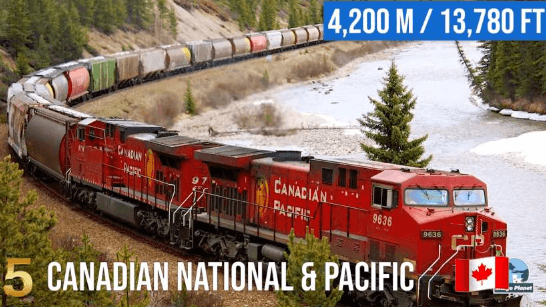
I think this is the Canadian record, and he’s talking about trains longer than this.
This is a consistent theme. The people who work in the industry claim, over and over, that PSR has lead to a massive increase in train length, and decrease in safety. But this doesn’t really jive with the pro-corporate explanation of PSR, which stated that it was about more scheduled trains. Let’s get back to that UP piece again.
Shifting from a train focus to a car focus: Imagine you’re going on a much-needed vacation to the Bahamas. You get to the airport and are so excited that you can already smell the salty ocean air. But then, while waiting at the gate, an announcement comes on saying your flight has been canceled because there weren’t enough passengers booked on the flight. What?! You’re told you’ll have to wait until tomorrow to catch the next flight when more passengers will be on board. So now you’ve wasted a vacation day from work and have one less day to spend on the beach. That’s frustrating, and it’s a waste of your time and money.
While airlines don’t delay takeoff just because a flight hasn’t reached maximum capacity, in the old model, trains did. In this example, keeping people from boarding until capacity is reached is a lot like holding cars until a train of a certain length is built. And, just like no one likes their vacation to be delayed, no one likes supply chain disruptions, either.
With PSR, this doesn’t happen. Instead of sitting in the yard waiting for a long train to be built, the car will simply be added to the next scheduled train. This approach eliminates variability, allows for more precise supply chain management, and results in more consistent transit times.

Again, they reiterate that the main advantage is just more frequent and reliable scheduling of trains. Theoretically you can’t do this without shorter trains. After all, it’s not like more reliable scheduling was something that the old railroad management totally ignored, or didn’t value. Same with more frequent shipping.
But again, back to Matthew DeLay.
Here, I might expand on something Mike mentioned: “Railroaders are paid for the inconvenience of their time.” It is an old saw, and it has some truth. I myself have made that Faustian Bargain. I have given up enormous amounts of home and family life for insurance, for a living wage, for a trade that is respectable. I do this for my family, which I simultaneously do not get to see. So I rationalize it.

Not getting to see your family was a common complaint of the rail workers, next only to no sick days. As someone who used to be a long haul trucker, I can say that there is no way to completely eliminate drivers, or in this case train engineers, being forced to spend time away from their families. However, I’m starting to get a tingly feeling in the back of my mind right now. I’ll address that later.
Meanwhile, I assure you, waiting for that call to run a 16,450-foot PSR train is dreadful: We all know what can happen, at any moment. A pallor of dread for 12 to more than 17 hours awaits. These trains are not already big enough for the carrier: We must pick up more cars for the PSR dream, with a conductor 13,800-feet away, reversing into a rail yard for more cars.
No railroader I know, were he or she made CEO, would continue this operational model. He or she would know it was not in their interest. In a generous mood, I believe the CEOs know, too. But they are being driven. They are being driven by a force that the regulatory body alone must step in and control. Gentleman and ladies: It is time to use the authority that is yours. The time for studies (as in the last spending bill) has passed. I ask you to take charge of this situation. If extreme greed is like an addiction, it is time for an intervention. If the SEC should have stopped Madoff; the STB and the FRA should stop Precision Scheduled Railroading, PSR.
From a recent letter to Rep. Tom Malinowski (D-N.J.), Member Subcommittee on Railways, Pipelines and Hazardous Materials:
“PSR has [made] engineer’s trains almost impossible to control. Shareholders roll the dice with communities, cities and the environment daily. They don’t live here. Trains have more than doubled in length. Imagine a train 16,400 feet in length weighing 17,500 tons: That is three miles, 560 feet and 35 million pounds. One train. And it is hauling hazmat, tanks of say, chlorine gas, or anhydrous ammonia. Just one tank car alone weighs 131 tons, that is 262,000 pounds. To give an example from history, 262,000 pounds of chlorine gas is approximately two-thirds of what the German army used during the trench warfare of all of WWI. One tank car alone.

They certainly do roll the dice with communities they don’t live near, as the residents of East Palestine found out. And the same bipartisan government that crushed the rail workers gives less than zero fucks about the people of their town, and needs to be pressured by the NJP into sending in FEMA, while still refusing to compensate them financially for something that was no fault of their own.
But getting back to PSR, I keep hearing “longer trains” over and over again.
“And then we pick up more enroute! My conductor is three miles away while I reverse this train into an active rail yard! Crossings don’t matter, and communities? Are you kidding? No sane country would move materials like this. These trains exceed the coupler and drawbar limits of the very cars themselves. The risks the Class I carriers are taking is a race to disaster. It is absolutely dreadful and grotesque.

Industry insiders saying that they’re seeing lots of derailments after Precision Scheduled Railroading was implemented carries with it some weight. Same goes for them calling out the callousness of these rail corporations and (((wall street))) when it comes to the communities that will be affected by their anti-safety practices.
“The rail infrastructure, in particular rail yards and sidings, were designed and built during the great Industrial Age. They did a lot of things right: they overbuilt bridges, for one. But it is not a failure of imagination that they could not foresee, from a sane perspective, that someday the bosses would want to normalize 15,000-foot trains.
Long trains. Long trains. Long trains. Over and over this is repeated, and it’s not just Matthew DeLay.
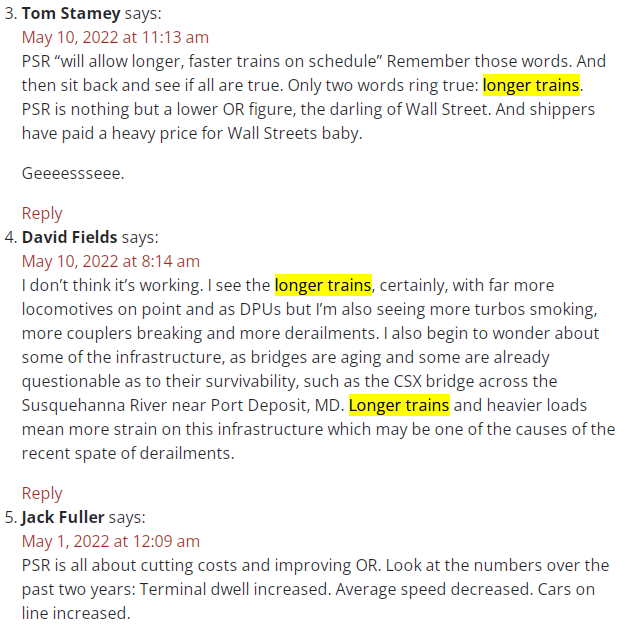
These comments, which I’ll transcribe later, were written about a year ago under a puff piece for the late E. Hunter Harrison, supposedly the inventor of Precision Scheduled Railroading. You can find that below.
A parked freight car is not making money for the railroad or moving goods for the shipper. Harrison took Thompson’s lesson to heart, and ultimately became obsessed with keeping locomotives, cars, and crews on the move. From this encounter Harrison developed his Precision Scheduled Railroading operating model, now commonly called PSR.
Harrison implemented his low-cost operating model at Illinois Central, then went on to deploy it at Canadian National, Canadian Pacific, and CSX Transportation. Less than a year after Harrison’s death in December 2017, Union Pacific, Norfolk Southern, and Kansas City Southern would adopt PSR, too. BNSF Railway remains the lone holdout.

Hunter E. Thompson
This is all sounding very vague. Something about keeping the trains moving as much as possible. This makes sense on the surface, but you’d think that there would be micro-optimizations, not some supposedly radical rethinking of logistics. Perhaps you combine two routes into one, or work with a few different manufacturers to simplify something. Maybe you complicate one train, since you can make it work on this one specific route. Maybe you start running shorter trains on another specific route since there’s demand for it.
That kind of thing.
In his book, “How We Work and Why,” published while he was chief executive at CN, Harrison outlined five guiding principles. They are:
● Provide Service: Do what you say you’re going to do.
● Control Costs: Eliminate unnecessary costs.
● Optimize Assets: Use assets more efficiently and productively.
● Operate Safely: Safety is the top priority.
● Develop People: Cultivate the best team of railroaders.You’ll see nearly identical versions of these foundations on the websites of the Class I PSR systems.

Jaime can we zoom in on the costs and assets part?
● Control Costs: Eliminate unnecessary costs.
● Optimize Assets: Use assets more efficiently and productively.

Here I was thinking that there was a lot of domain specific knowledge required. Instead you just have to “control costs” by “eliminating unnecessary costs.” I’m sure no one else ever thought about that. Oh and optimizing assets can be done by using your assets more efficiently. Genius.
The other three “principles” are a bunch of buzzwords as well. Do what you say you’re going to do, safety is the top priority (lol), and cultivate the best team of railroaders. Pretty sure I didn’t need to buy your book Mr. Harrison, I could have come up with that inane powerpoint presentation all on my own. Luckily he comes up with something that is a bit more reasonable with his “PSR Service Design Principles.”
PSR is built on seven service design principles that govern a railroad’s transportation plan.
● Minimize car dwell time in yards.
● Minimize car classifications.
● Have more than one way to move cars to destination.
● Run general-purpose trains.
● Balance train movements by direction.
● Minimize power requirements.
● Strive for steady workload flow.

This is less bad than his previous bloviation, but not by much. As someone who used to be a long haul trucker I can say that all of these have trucking parallels, and no trucking corporation would view any of this as particularly insightful. The only difference might be having multiple ways to move cars to destinations, since with a train that could require rethinking how you schedule things.
Neither the five foundations of what is Precision Scheduled Railroading nor the seven service design principles are entirely new to railroading.
Real shocker.
But C. Tyler Dick, a lecturer and principal research engineer at the Railtec program at the University of Illinois at Urbana-Champaign, says PSR aims to combine the best elements of two opposing operating plan strategies: hold for tonnage and schedule adherence.
PSR, on the other hand, aims to provide consistent, frequent service to reduce both terminal dwell and transit time – but uses long trains and reduced rolling stock requirements to minimize costs, Dick says.
One way PSR does this is by operating general-purpose trains instead of dedicated single-commodity trains. This is why you’ll see railroads operate trains that might include intermodal, merchandise, and bulk commodities – rather than three separate trains.

In theory everything they’re saying about mixing and matching trains and cargo and intermodal with grain and blah blah is all fine and good. Logistics is complicated. It’s not out of the realm of possibility that someone could come up with a better non-exploitative business model that increases margins somewhat. However, freight rail is centuries old, and it is extremely suspicious when I see the celebration of such obviously fraudulent genius.
Traditional railroads rely on locals that gather traffic, bring it to local yards, and then send this hodgepodge of cars to a hump yard for classification. There the yard sorts the traffic into blocks for specific destinations on the railroad.
The PSR railroad instead focuses on pre-blocking outbound traffic at origin or local yards. Well-sorted trains arrive at classification yards and reduce their switching workloads, Dick explains. If there’s not enough volume to justify the expense of a hump yard, the railroad can convert it to a flat-switching facility that’s less expensive to operate, as CN, CP, CSX, NS, and UP have done.
PSR greatly simplifies traffic flows and switching requirements, Dick says, while maximizing train size and minimizing dwell time.
Again there is this focus on some efficiency gain that suddenly springs into existence centuries after the invention of freight rail. Now it’s accomplished by having trains sorted by classification in small yards, instead of the big classification yard.

Again, it’s possible that this could result in lower costs, but if it’s so easy to not have gigantic classification yards, why didn’t people get rid of them decades ago?
Local service changes, too, Dick notes. Under a traditional model, a local yard might have two crews using four locomotives on the same shift to provide flexible service to customers near the yard. Under PSR, one local day crew and one night crew might share one locomotive, which reduces cost but also service flexibility.

To me this sounds like “exploit your workers and work them until they drop.” It also sounds like an excuse for selling off locomotive and other assets, something that Tyler Dick reframes as a benefit of PSR, and not a short term stripping of corporate assets by Wall Street.
“No Precision Scheduled Railroad implements all of these elements,” Dick says. “And PSR is not one thing but a collection of actions that cumulatively results in changed operating practices and culture.”
And again, I still don’t know what exactly PSR is, and it’s now a “collection of actions.” However, Trains.Com does finally admit that the PSR trains are longer.
All of the PSR railroads have dramatically reduced the size of their locomotive and freight car fleets as they move their tonnage on fewer but longer trains. This not only reduces costs – with smaller fleets, railroads have closed locomotive and car repair shops – but it also creates capacity.
“The prevailing view in the rail industry is that more locomotives, more cars, and more crews allow for the movement of more volume,” CP wrote in a 2016 white paper on PSR. “Precision railroading challenges this view. Because track and yard capacity is finite, adding more equipment creates congestion and slows down the system. While it may sound counterintuitive, reducing fleet size actually enables a railroad to move more volume. By running fewer and heavier trains, faster and on schedule, assets can be utilized far more productively and can yield significant savings.”
The reduction in meets in single-track territory helps reduce running time between terminals and crew-change points, and helps increase the average train speed despite running longer, heavier trains with lower horsepower per ton ratios. This is one reason why average train speed and the number of miles cars travel per day has generally increased after railroads adopt PSR.
The retirement of older locomotives, meanwhile, makes the fleet more reliable and more fuel efficient, which in turn helps reduce costs.
The PSR systems also have cut management positions at their headquarters, some by as much as 30%. The idea is to push operational decision-making into the field, where local operating people are closer to the railroad’s customers.

Remember, this is the same railroad industry that got the government to crush the workers, who were threatening to strike because they didn’t get one single sick day.
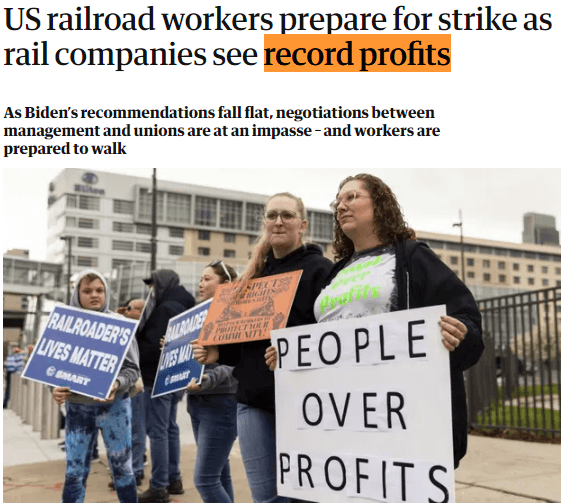
It does not appear that PSR is much more than the simple exploitation of workers combined with short term boosts to profits by premature retirement of rail lines, locomotives, etcetera, all warmed over with some intolerable buzzwords. This has all the hallmarks of (((Wall Street))) doing an organized, parasitical raid on the nation’s infrastructure.

Here are the comments from earlier. Another comment, by one Chris Brdlik, echoes my own thoughts.
I still don’t see how closing hump yards in favor of flat switching improves train efficiency. Building trains in local yards helps? Okay, but at some point the various cars mixed in a PSR train of whatever length will have to be classified by destination. Doing that once makes sense (ie, don’t run every car of every train over the hump at every yard). But how else can the necessary sorting be done, when the tracks of a rail system are a web of lobes and connections, with loads going, ultimately, to different points on the web?
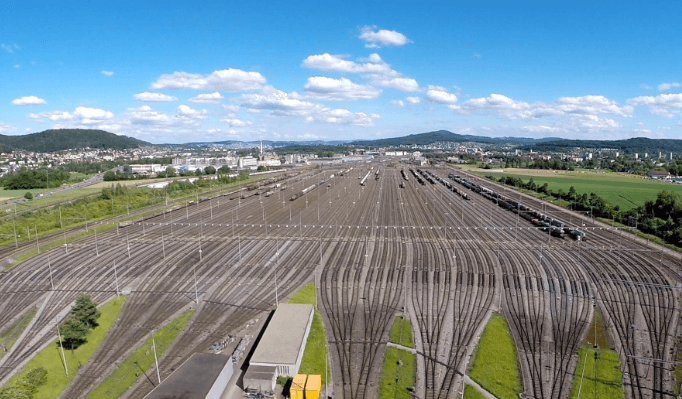
Hump yard, also called classification yard.
I don’t have firsthand knowledge of the problem of sorting rail cars. But again, freight rail is centuries old. As a result of them downsizing their hump yards they can sell off more assets, creating short term profits. Viewed through the lens of a (((Michael Milken))) style raid, this makes perfect sense.
User Jack Fuller comments with the following.
PSR is all about cutting costs and improving OR [Operating Ratio]. Look at the numbers over the past two years: Terminal dwell increased. Average speed decreased. Cars on line increased.
In other words, this is all a bunch of bullshit to justify the short term stripping down of rail corporations at the behest of Wall Street. Again, that’s opinion, not fact, but it’s hard to see this as a legitimate long term business strategy, and multiple people are saying that.
User Bob Yarger (replying to the above),
It all sounds good, but anyone I know who had to work for him would be happy to urinate on his grave. When he died, this email circulated widely among working and retired CPR employees — “Hunter is dead – best xmas ever”. Fortunately I retired before he worked his “magic” and turned a good railway to work for into a living hell.

Again, really getting a “here’s five buzzwords to exploiting the workers,” vibe here.
The debate between shippers and railroads on the merits of PSR, characterized by cutting lanes, yards and locomotives in order to deliver more consistently on time and increase operational speed, has raged since CSX first began overhauling its operation in 2017. But now that six of the seven Class I railroads are adopting the principles demonstrated by the late Hunter Harrison at CSX and Canadian National before that, more shippers are affected.
Randy Gordon, president of the the National Grain and Feed Association told the members: “For our sector, PSR has resulted in increasing arbitrary, abrupt and disruptive changes to operations plans and service schedules, often negating tens of millions of dollars in customers’ investments in their facilities, track space and other infrastructure that the railroads insisted that they make in order to continue to have rail service.”
A particular focus of the discussion was demurrage and accessorial fees. Railroads levee demurrage fees when rail cars exceed prescribed loading and unloading time. Accessorial fees include charges for any event or service other than the movement of freight from origin to destination — examples include weighing cars, diverting a shipment in transit or additional switching services.
In the age of PSR, railroads claim the increased focus on speed warrants stricter adherence to schedules, resulting in such fees when scheduled times aren’t met. At the hearing, shippers claimed the application of these fees is inconsistent and unfair in how and to whom they are applied.
“Kinder Morgan doesn’t argue or contest the purpose or concept of demurrage. Our concern lies in a one-sided and monopolistic methodology by which the railroads assess, bill and attempt to collect these charges,” said Josh Etzel, vice president of operations at Kinder Morgan, the largest terminal operator in North America. Etzel said his company is involved in multiple lawsuits with railroads and customers over these fees. And the issue of who is liable for the fees warrants review by the STB, Etzel argued.
“Since the adoption of PSR [International Paper] has seen our demurrage more than double to over $7 million,” added Mike Amick, senior vice president at International Paper.
And then we have some small time grifts like this on the side with exorbitant fees.

I wish I had some smoking gun, when all I have instead is preponderance of evidence. What we’re seeing with freight rail is consistent with (((wall street))) pushing for a hyper focus on short term profits, seemingly at the expense of long term viability. This has been criticized as leading to safety issues including excess derailments, as well as abused workers. But I can’t point to any particular tragedy and say that PSR specifically is responsible, in part because I still don’t know what exactly it is. Then again, neither do the bloviating advocates for it either.

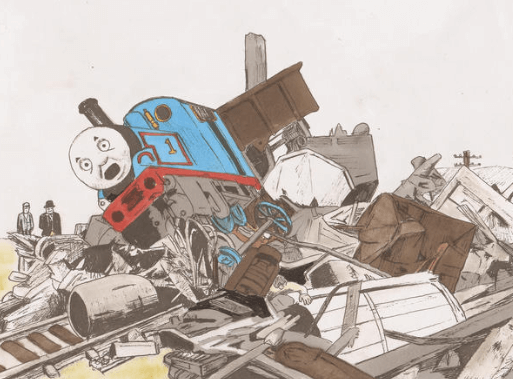




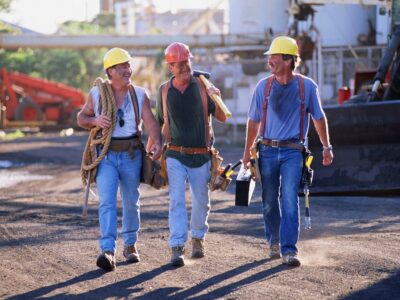







I found this article to be extremely informative and I am sharing it around.
Global Homo strikes again. Also, very informative article.
Hang on:
So they’re reducing rail maintenance facilities and workers, reducing the amount of rolling stock they have, but increasing the mileage put on each one by never letting it rest in a yard? Won’t this just burn up their existing inventory faster from higher use? It’s the epitome of short term profits over long term viability.